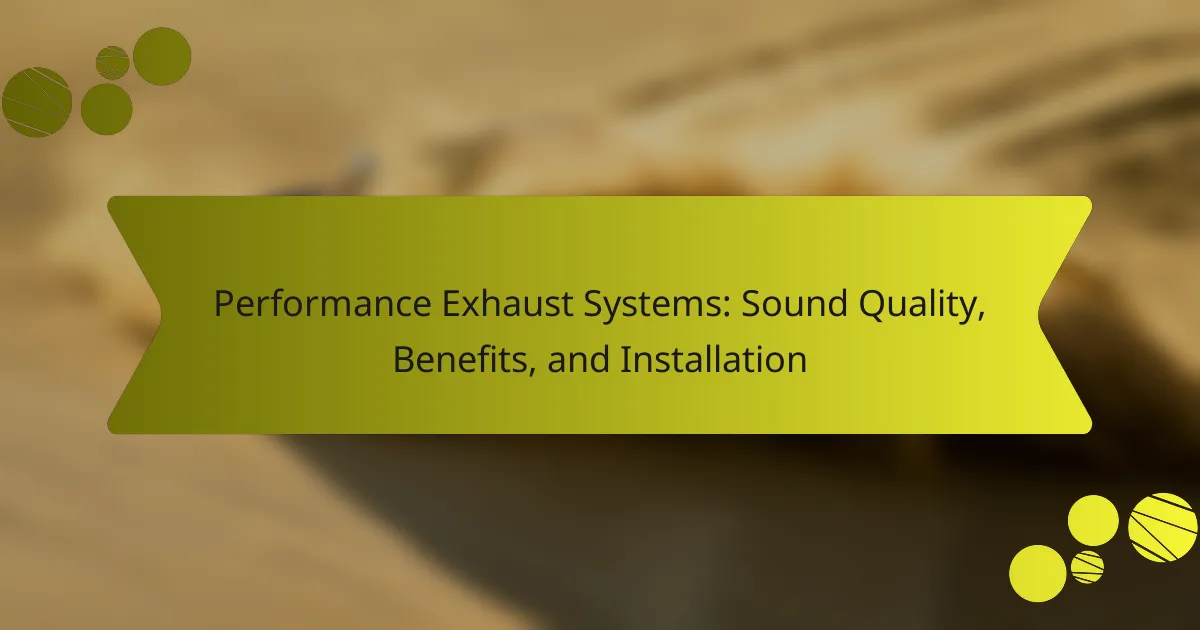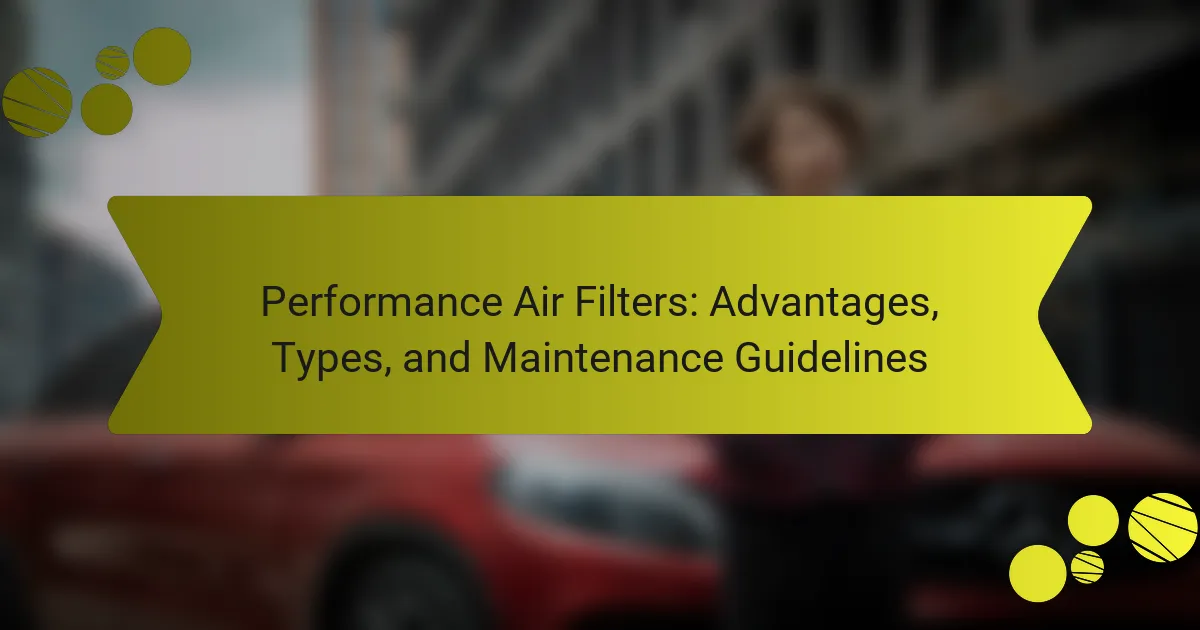Performance exhaust systems significantly enhance vehicle performance by improving sound quality, increasing horsepower, and optimizing fuel efficiency. This article explores the correlation between sound quality and performance, details the installation process, and examines the unique features of various systems. Additionally, it covers maintenance tips to ensure longevity and optimal function.
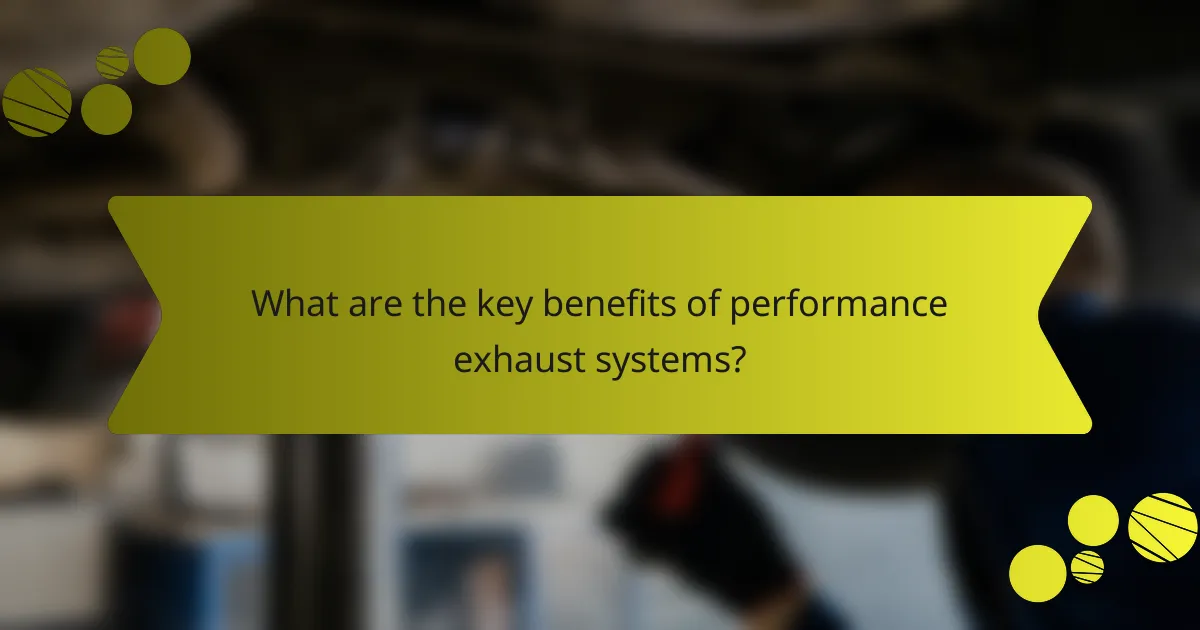
What are the key benefits of performance exhaust systems?
Performance exhaust systems enhance vehicle performance by improving sound quality, increasing horsepower, and optimizing fuel efficiency. They often feature lighter materials and better airflow, resulting in a more aggressive sound and improved engine response. Additionally, installation can be straightforward, often requiring minimal modifications to the vehicle.
How do performance exhaust systems enhance engine efficiency?
Performance exhaust systems enhance engine efficiency by improving exhaust flow and reducing back pressure. This leads to better engine performance and increased horsepower. The systems often feature larger diameter pipes and high-flow mufflers, which optimize sound quality while maximizing airflow. As a result, vehicles experience a more responsive throttle and improved fuel efficiency.
Why do enthusiasts prioritize sound quality in exhaust systems?
Enthusiasts prioritize sound quality in exhaust systems because it enhances the driving experience. A well-tuned exhaust produces a distinct and pleasing sound that reflects the vehicle’s performance. This auditory feedback can create an emotional connection, making the driving experience more enjoyable. Additionally, sound quality can indicate engine health and performance, influencing buyer decisions. Performance exhaust systems often feature unique designs that optimize acoustics, resulting in a more aggressive tone without excessive noise.
What impact do performance exhaust systems have on vehicle aesthetics?
Performance exhaust systems enhance vehicle aesthetics by providing a sportier, aggressive look. They often feature polished tips and unique designs that can significantly alter the rear profile of a vehicle. Additionally, the sound produced by these systems contributes to a more dynamic and appealing auditory experience. This combination of visual and auditory enhancements can elevate the overall presence of the vehicle, making it more attractive to enthusiasts.
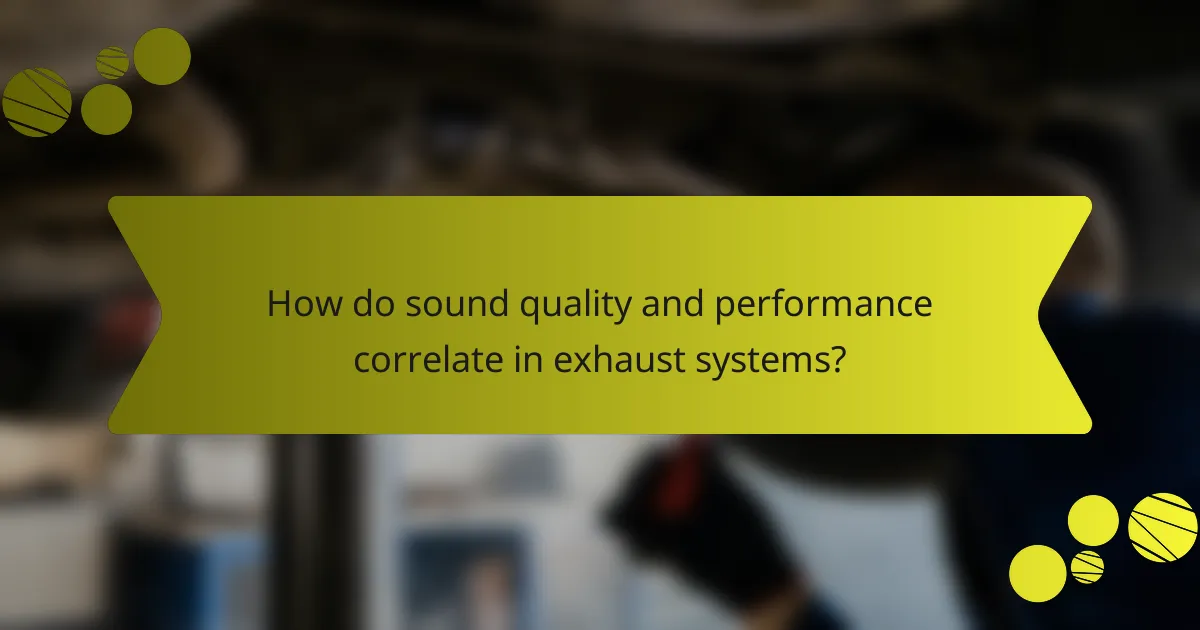
How do sound quality and performance correlate in exhaust systems?
Sound quality and performance in exhaust systems are closely linked. High-performance exhaust systems enhance engine efficiency and produce a more aggressive sound profile. This correlation occurs because improved airflow reduces back pressure, allowing for better engine performance and a deeper, more resonant exhaust note. Additionally, the materials used can influence sound quality; for example, stainless steel often provides a richer tone compared to mild steel. Overall, investing in a performance exhaust system can yield significant benefits in both sound and performance.
What factors contribute to the sound characteristics of exhaust systems?
The sound characteristics of exhaust systems are influenced by design, material, and muffler type. The exhaust system’s diameter affects sound volume and tone. Additionally, the presence of resonators can modify sound frequencies, enhancing specific tones. Lastly, engine type and performance modifications also contribute significantly to the overall sound profile.
How do different materials affect exhaust sound quality?
Different materials significantly influence exhaust sound quality. Stainless steel offers a sharp, aggressive tone, while mild steel produces a deeper sound. Titanium is lightweight and creates a high-pitched note. Each material’s density and composition affect resonance and overall acoustic performance.
Which tuning options are available for sound customization?
Performance exhaust systems offer various tuning options for sound customization, including muffler selection, resonator adjustments, and exhaust tip configurations. Mufflers can be chosen based on desired sound levels, ranging from aggressive to subtle. Resonators can be modified to enhance or reduce specific sound frequencies. Exhaust tips can also influence the overall sound profile, providing a more polished or aggressive tone. These options allow for personalized sound experiences tailored to driver preferences.
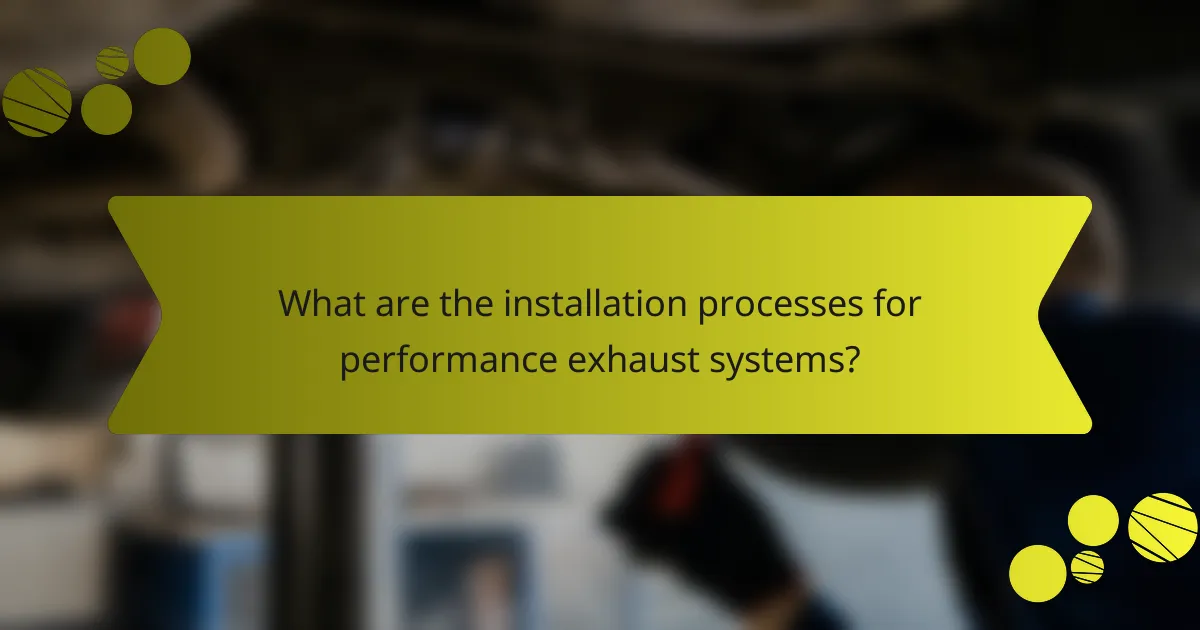
What are the installation processes for performance exhaust systems?
The installation process for performance exhaust systems typically involves several key steps. First, gather necessary tools and safety equipment. Second, lift the vehicle securely using jack stands. Third, remove the existing exhaust system by disconnecting clamps and hangers. Fourth, fit the new performance exhaust system, ensuring proper alignment and secure attachment. Finally, check for leaks and test the system to confirm sound quality and performance.
What tools and materials are required for installation?
To install a performance exhaust system, you need specific tools and materials. Essential tools include a socket set, wrenches, a jack, and jack stands. Materials typically required are exhaust hangers, clamps, and gaskets. Additionally, some installations may require a cutting tool for adjustments.
How can one ensure proper fitment and alignment during installation?
To ensure proper fitment and alignment during installation, use precise measurements and follow manufacturer guidelines. Begin by checking all components for compatibility. Align the exhaust system with existing mounts, ensuring a snug fit. Use appropriate tools to tighten connections without over-torquing, which could cause damage. Regularly inspect the system post-installation for any shifts or misalignments.
What common mistakes should be avoided during installation?
To avoid common mistakes during the installation of performance exhaust systems, ensure proper alignment, secure all connections, and use the correct tools. Neglecting these aspects can lead to leaks and suboptimal sound quality. Additionally, failing to follow manufacturer instructions can result in improper fitment and performance issues. Always double-check components before finalizing the installation to ensure everything is in place.
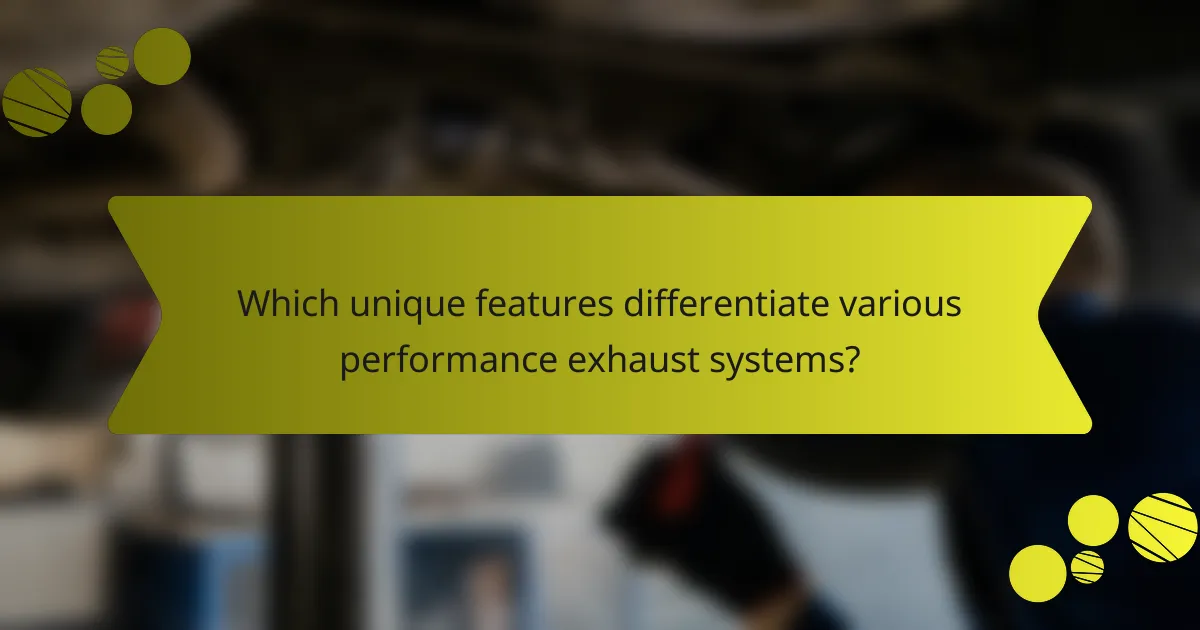
Which unique features differentiate various performance exhaust systems?
Performance exhaust systems differ primarily in sound quality, material composition, and installation complexity. Unique features include muffler design, pipe diameter, and resonator presence, impacting performance and auditory experience. Systems using stainless steel offer durability, while titanium variants reduce weight. Custom fit options enhance installation ease, catering to specific vehicle models.
What are the distinctions between cat-back and axle-back exhausts?
Cat-back exhaust systems replace the entire exhaust system from the rear axle back, while axle-back systems only replace the section from the rear axle to the exhaust tip. Cat-back systems enhance performance by improving airflow and sound quality, whereas axle-back systems focus primarily on sound and aesthetics. The choice between them often depends on desired sound profile and performance goals.
How do brand-specific technologies influence performance?
Brand-specific technologies enhance performance by optimizing sound quality, improving efficiency, and ensuring compatibility. These systems are tailored to specific vehicle models, resulting in better exhaust flow and reduced back pressure. For instance, a performance exhaust system can increase horsepower by up to 10-15%, showcasing its unique attribute of enhanced power output. Additionally, installation processes vary, with some brands offering user-friendly kits that simplify setup, further contributing to overall performance improvements.
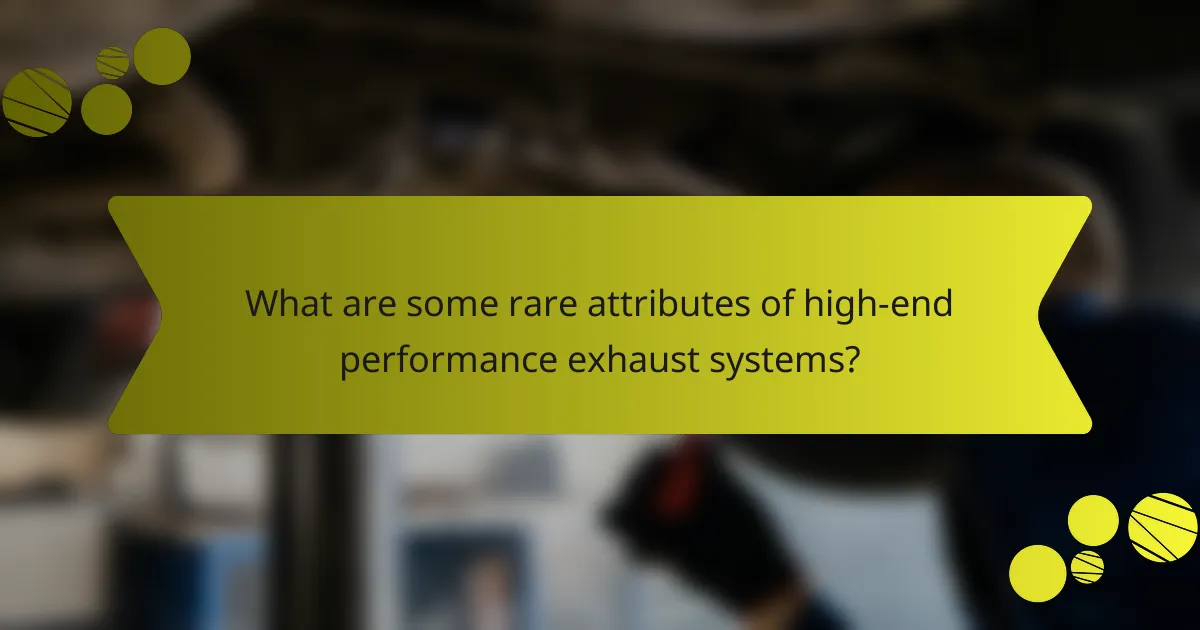
What are some rare attributes of high-end performance exhaust systems?
High-end performance exhaust systems may feature rare attributes such as advanced materials, custom tuning options, and unique sound profiles. These attributes enhance durability, optimize engine performance, and provide a distinctive auditory experience. For instance, titanium construction offers lightweight strength while specialized resonators can create tailored sound frequencies. Additionally, some systems include integrated valves for adjustable sound levels, allowing users to customize their driving experience.
How do custom-built exhaust systems differ from off-the-shelf options?
Custom-built exhaust systems offer tailored performance and sound quality, unlike off-the-shelf options. Custom systems are designed to fit specific vehicle models and performance goals, enhancing horsepower and torque. They often utilize higher-quality materials, resulting in improved durability and weight reduction. Off-the-shelf options may lack the precision fit and custom tuning that can optimize sound and performance characteristics.
What innovative technologies are emerging in the exhaust system market?
Innovative technologies in the exhaust system market include advanced materials, smart sensors, and active exhaust systems. These innovations enhance sound quality, improve performance, and optimize fuel efficiency. For example, lightweight materials reduce weight while smart sensors monitor exhaust flow for real-time adjustments. Active exhaust systems allow drivers to customize sound profiles, offering a unique auditory experience. These technologies are reshaping performance exhaust systems, delivering significant benefits for automotive enthusiasts.
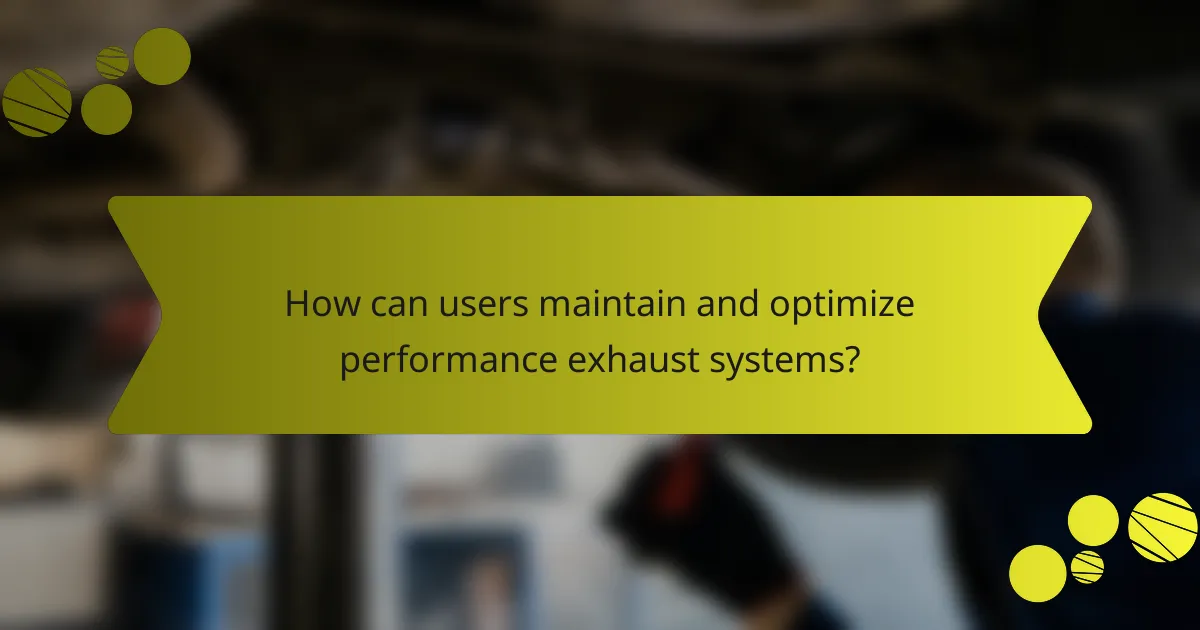
How can users maintain and optimize performance exhaust systems?
Users can maintain and optimize performance exhaust systems by following essential care practices. Regular inspections help identify leaks or damages early. Cleaning the exhaust system prevents buildup that can hinder performance. Proper installation ensures optimal fit and function, reducing stress on components. Upgrading to high-quality materials enhances durability and sound quality. Regularly checking and replacing gaskets maintains a tight seal, improving exhaust flow.
What are the best practices for regular maintenance of exhaust systems?
Regular maintenance of exhaust systems enhances performance and prolongs lifespan. Key practices include inspecting for leaks, checking hangers and mounts, cleaning the system, and replacing damaged components. Regular checks ensure optimal sound quality and efficiency.
How can one troubleshoot common issues with performance exhaust systems?
To troubleshoot common issues with performance exhaust systems, check for leaks, inspect for blockages, and ensure proper installation. Start by examining all joints and connections for any signs of exhaust leaks. Next, verify that the exhaust system is free from obstructions, such as debris or damaged components. Finally, confirm that the system is installed correctly, following manufacturer guidelines for optimal performance.
What expert tips can enhance the longevity of an exhaust system?
Regular maintenance and quality materials enhance the longevity of an exhaust system. Key tips include using heat-resistant coatings to prevent rust, ensuring proper installation to avoid leaks, and regularly checking for damage or corrosion. Additionally, investing in high-quality components can significantly extend the system’s lifespan.
